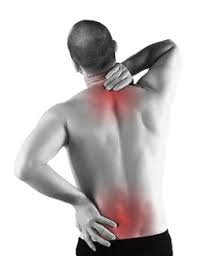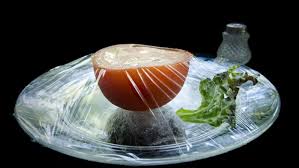Myofascial Release for Back Pain
June 2017
To understand what myofascial release is, we must first understand where the root of the word comes from and what fascia is:
 “Myo” as a pretext that usually refers to the muscle. And fascia is a layer of tissue within our body that has a broad and vague definition.
“Myo” as a pretext that usually refers to the muscle. And fascia is a layer of tissue within our body that has a broad and vague definition.
Dr. Kerendian’s description of Fascia:
- As a medical student– one of my instructors described fascia with the following quote ….” Most physicians and anatomists described fascia as just a thin gooey layer that is right underneath your skin but above your muscle which is known to be useless” then he continued explaining “fascia is the second largest surfaced tissue in our body, so how is it useless as others say?”
- Since that day I have been taught by well experienced Osteopathic Physicians, written medical journals, experienced physical therapist, intense osteopathic training, and 15 years of treating patients with my hands that the traditional method of thinking about fascia (being a useless tissue in our body) has been proven wrong.
- In fact, I have learned that fascia is involved in more than 70% of the pain experienced by patients that I have seen and treated in the last 15 years.
How does fascia contribute to pain?
Imagine a thin layer of tissue as thin as a Saran Wrap covering our muscles. Now imagine that any time our muscles go through physical stress (whether it be spasm, tear, strain, weakness, laxity, overwork) this Saran wrap layer’s (fascia’s) protective sense will concentrate and bunch up in a ball over the point of the muscles maximum stress point, simply as our body’s autonomic protection mechanism for that muscle.
 Unfortunately, as you can imagine when you bunch up a portion of a Saran wrap there will be tension lines formed across the Saran wrap which disrupts the smoothness and the fluidity of the Saran wrap with tight lines across the entire covering of the Saran wrap.
Unfortunately, as you can imagine when you bunch up a portion of a Saran wrap there will be tension lines formed across the Saran wrap which disrupts the smoothness and the fluidity of the Saran wrap with tight lines across the entire covering of the Saran wrap.
(This phenomenon is why a simple shoulder knot or trigger point can be the cause or trigger of an individual’s LOWER BACK PAIN — because the body one look that holistically is connected in wondrous ways. And one of these “wondrous ways” is now known as the fascia.) We now know that the fascia has its own autonomic sense of motion which is aimed towards protecting its underlying tissues such as muscles and connective tissue.
What is the best way to know whether fascia is involved in your pain?
The best method to know this is to see a specialist, such as an osteopathic physician, who has had years of experience and education regarding the fascia. This cannot be seen on any radiology examinations such as x-ray, ultrasound, CAT scan, MRI. This diagnosis simply is dependent on the tactile diagnostics of your osteopathic physician, and your physician’s knowledge of the musculoskeletal system and its connections. Your timeline and progress of your pain is also an important feature in this diagnosis, therefore a complete history of how your pain started and how it progresses that will help your physician pinpoint the plan of care accurately.
Myofascial Release in Los Angeles
How will the physician treat my myofascial pain?
 The answer to this question is “It depends on the actual source of problem which induced your myofascial pain”. After an accurate diagnosis, your osteopathic physician will devise a comprehensive pain plan which may or may not include any of the following treatment modalities:
The answer to this question is “It depends on the actual source of problem which induced your myofascial pain”. After an accurate diagnosis, your osteopathic physician will devise a comprehensive pain plan which may or may not include any of the following treatment modalities:
- Treatments aimed for the direct release of Myofascia
- Trigger point injections
- Osteopathic manual therapy/adjustments
- Myofascial release
- Treatments aimed towards the underlying primary and secondary causes of Myofascial tension
- PRP or platelet rich plasma therapy
- Prolotherapy
- Musculoskeletal Adjustments
- Hormone Optimization Therapies
How does Dr. Kerendian address the above?
Dr. Kerendian, a pain management doctor in Los Angeles, prides himself of his comprehensive treatment planning. This means that he starts with a thorough evaluation 1st (this includes taking a detailed history of your pain, then a complete head to toe examination of your musculoskeletal system).
After his evaluation, he will have diagnosed the primary, secondary, and tertiary causes of your presenting problem. Then he will treat all the above causes in a progressive manner. Dr. Kerendian’s theory is “I will continue relaxing the tension you have built in your lower back to get you to be functional, however if I feel your knee arthritis is throwing off the balance in your body and continuously triggering your back spasm, then unless we fix your knee as well, then your back pain will need lifelong therapy”
Tailor made and comprehensive and progressive care is what Dr. Kerendian offers to his pain therapy patients.

IN SIMPLE CAUSE AND AFFECT TERMINOLOGY:
- Stress (mental or physical) and tension causes
- Stiffness of upper shoulders which causes
- Tightness and pain of upper back/neck (and tightness of its muscle fibers) which causes
- Trigger Point KNOTS (like the onion in the picture) which causes
- Tension of the fascia (just like the saran wrap tight lines are formed) which causes
- a pulling effect on the lower back fascia
- which causes low back pain
Therefore, trigger point injections along with OMT of the tight shoulder muscle fibers will release the knot, which releases the saran wrap, which releases the pulling effect on the lower back, which diminishes your lower back pain.


